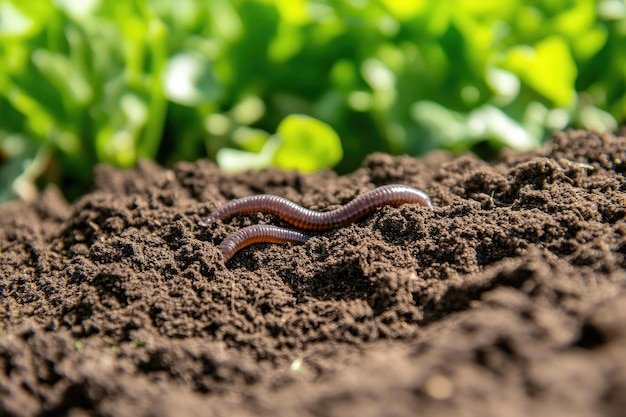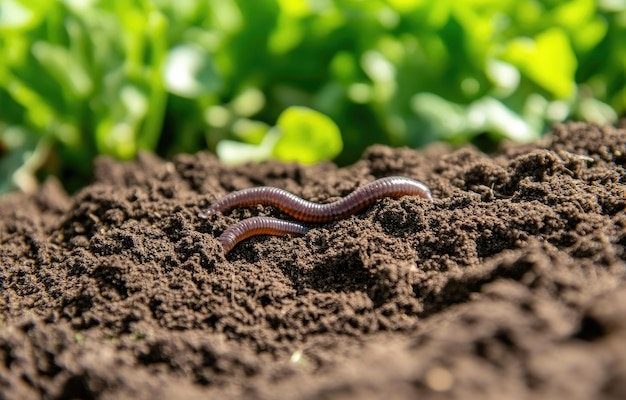
Monitoring earthworm activity can sound a bit technical, but it’s actually quite simple and rewarding. Just like you might check the battery life of your remote control to see if it needs a change, you can keep an eye on soil logs to gauge the health of your earthworm population. Tools like soil logs can help you measure worm activity over time, giving you a clear picture of what’s happening underground. In this article, I’ll guide you through the basics of monitoring earthworm activity, using soil logs, and why it’s important for your garden’s health.
Why Should You Monitor Earthworm Activity?
You might be wondering why earthworm activity matters in the first place. Well, these little guys do some heavy lifting when it comes to the ecosystem of your soil. They help with **nutrient cycling**, which means they break down organic matter and make nutrients accessible to plants. If you have a healthy population of earthworms, your soil is likely more fertile.
Tracking their activity can also tell you about the overall condition of your soil. For example, if you notice a decline in worm numbers, it could signal issues like soil compaction or poor drainage. It’s like having a built-in soil health indicator. By keeping tabs on earthworm activity, you can make informed decisions about how to manage your garden effectively.
Another reason to monitor earthworm activity is to support biodiversity. Earthworms are just one piece of a larger puzzle in the soil ecosystem. A thriving worm population often means a happy habitat for other organisms, such as beneficial insects and microbes. By understanding their activity, you can help create a healthier environment for all these creatures.
What Are Soil Logs?
Soil logs are essentially records that help you track various factors about your soil, including earthworm activity. Imagine keeping a journal of your garden’s health—every time you note something significant, you’re building a clearer picture of how things are developing.
You can create a soil log quite easily. It might include details such as the **date**, **location**, **weather conditions**, and what you observe about the earthworms. For instance, you might write down how many worms you found during a specific observation or note if they seem more active after a rain.
By keeping this log over time, you can spot trends. Maybe you notice that earthworms are more active in the spring or after heavy rains. These insights can guide your gardening practices, helping you adjust conditions to support your soil’s health.
How to Create a Soil Log
Creating a soil log is easier than you might think. Here’s a simple step-by-step guide to get you started:
1. **Gather Your Supplies**: You’ll need a notebook or a digital app to keep track, a measuring tape, and possibly a small trowel to dig into the soil.
2. **Choose Your Locations**: Pick a few areas in your garden to monitor. Varying spots can give you a broader picture of earthworm activity across different soil types.
3. **Make Observations**: At least once a month, check your chosen spots. Dig down a few inches, and look for earthworms. Note how many you see, their size, and their behavior.
4. **Record Your Findings**: Write down your observations in your soil log. Be sure to include the date, weather conditions, and any other notes that seem relevant.
5. **Analyze Trends**: After a few months, review your log to see if there are patterns. Are there times when worms seem more active? This can inform when to plant or amend your soil.
By consistently keeping this log, you’ll have a valuable resource that not only tracks earthworm activity but also serves as a guide for improving your garden’s health.
Tools for Monitoring Earthworm Activity
While you can start with just a notebook, there are also some handy tools that can make monitoring earthworm activity easier. Here are a few worth considering:
- Soil Probe: This is a tool designed to easily extract soil samples. It minimizes disturbance to the soil structure while allowing you to gather samples for your log.
- Magnifying Glass: If you really want to get close to those worms, a magnifying glass will help you examine them more closely without harming them.
- Smartphone Apps: There are gardening apps that allow you to log your findings digitally, making it easy to track and analyze over time.
- Measuring Tape: Use this to measure the depth of your soil samples, helping you to create a more accurate record.
Having the right tools can make your observations more accurate and enjoyable. Plus, it can spark curiosity in others, like friends and family, who might join you in your gardening adventures.
Common Challenges in Monitoring Earthworm Activity
As with anything, you might run into a few challenges while monitoring earthworm activity. Here are some common hiccups and how to deal with them:
1. **Soil Conditions**: If your soil is too dry or too compacted, you might not see many worms. Consider adding organic matter, like compost, to improve soil health and encourage worm activity.
2. **Seasonal Changes**: Earthworms can be less active in colder months. Don’t be discouraged! Use this time to prepare your log and plan for the next growing season.
3. **Pesticides and Chemicals**: If you use pesticides in your garden, it can harm earthworm populations. Aim for organic gardening techniques. They’re better for your soil and your worms!
4. **Consistency**: It can be easy to forget to log your observations. Try setting a reminder on your phone or making it a part of your gardening routine.
Remember, patience is key. Monitoring earthworm activity is a long-term game, and you’ll likely see rewards over time.
Why Earthworm Monitoring Matters for Sustainable Gardening
Incorporating earthworm monitoring into your gardening routine isn’t just about the worms; it’s about sustainable practices that ultimately lead to healthier ecosystems. When you pay attention to the soil’s life, you’re promoting biodiversity and creating a space where plants can thrive without excessive inputs.
By understanding the role of earthworms in soil health, you can make informed decisions about how to manage your garden. For example, if you notice a decline in earthworm numbers, it might be a sign to evaluate your practices. Are you overwatering? Are you compacting the soil too much with foot traffic? These insights can help you adjust and create a better environment for both your plants and the creatures that help them grow.
Monitoring earthworm activity through soil logs isn’t just a science project; it’s a step toward becoming a more conscious gardener. You’re not only growing plants, but you’re also cultivating a thriving ecosystem.
In conclusion, keeping an eye on earthworm activity with soil logs can be a fun and informative way to enhance your gardening experience. As you track your soil’s health and adjust your practices, you’re contributing to a more sustainable environment. So, grab that notebook, get your hands dirty, and start observing! You’ll be amazed at what lies just beneath the surface.

